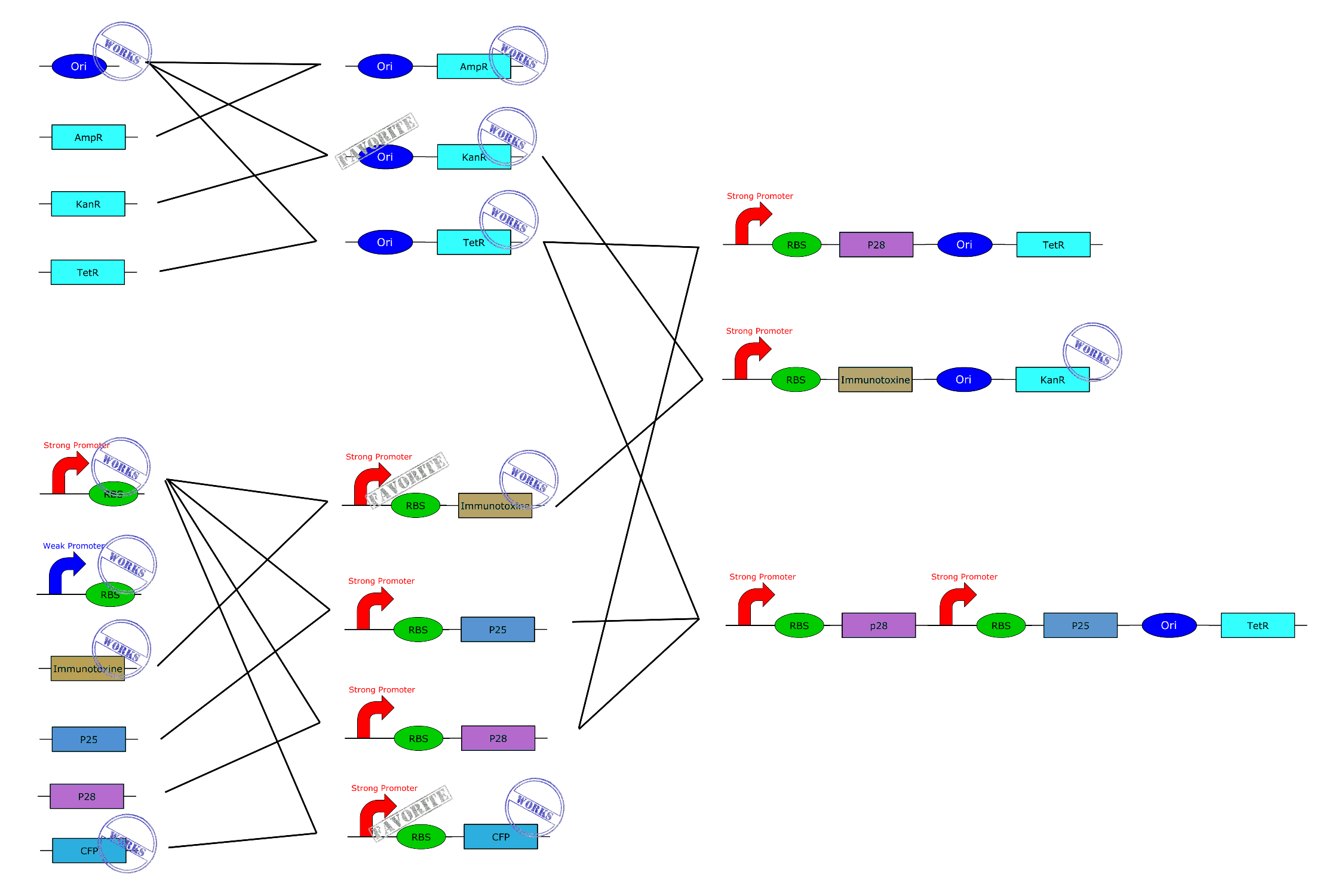Team:EPF Lausanne/Project parts
From 2010.igem.org
(→BioBricks) |
(→BioBricks) |
||
| Line 66: | Line 66: | ||
<area shape=Rect Coords=501,1173,819,1299 Href="http://partsregistry.org/Part:BBa_K320005"> | <area shape=Rect Coords=501,1173,819,1299 Href="http://partsregistry.org/Part:BBa_K320005"> | ||
</map> | </map> | ||
| + | |||
</html> | </html> | ||
| Line 77: | Line 78: | ||
<area shape=Rect Coords=492,54,765,117 Href="http://partsregistry.org/Part:BBa_K3200011"> | <area shape=Rect Coords=492,54,765,117 Href="http://partsregistry.org/Part:BBa_K3200011"> | ||
| - | + | ||
| - | + | ||
| - | + | ||
| - | + | ||
| - | + | ||
| - | + | ||
</map> | </map> | ||
| + | |||
</html> | </html> | ||
| Line 98: | Line 95: | ||
Both measurements were done at the same time in E.coli DH5a over 16 hours at 37°C and the results are averaged over 6 samples.<br /> | Both measurements were done at the same time in E.coli DH5a over 16 hours at 37°C and the results are averaged over 6 samples.<br /> | ||
Unfortunately we can't compare our measurements with a well known promoter. | Unfortunately we can't compare our measurements with a well known promoter. | ||
| - | |||
| - | |||
| - | |||
| - | |||
| - | |||
| - | |||
| - | |||
| - | |||
| - | |||
| - | |||
| - | |||
| - | |||
| - | |||
Further characterization will focus on the measurement of the activity in Asaia. | Further characterization will focus on the measurement of the activity in Asaia. | ||
Revision as of 13:41, 27 October 2010
ork in E. coli, which is very useful for our sets of experiments.


Cloning
We performed all the cloning in E.coli, and did experiments on Asaia transformation, growth and resistance to antibiotics in parallel.
As E. coli origin does not work in Asaia, we added an origin that was compatible with this bacteria (which was recovered from a GFP-plasmid transformed into the Asaia we received from Italy). On the opposite, Asaia's origin does work in E. coli, which is very useful for our sets of experiments.
BioBricks
All our parts are in the pSB1C3 backbone vector (abbreviate C3).
First the legend:
- Ori = Origin of replication for Asaia and E. coli
- S = Strong Promoter
- W = Weak Promoter
- Immu = immunotoxin
- P25 = Pfs25 protein
- P28 = Pfs28 protein
- Kan = Resistance to Kanamycin
- Tet = Resistance to Tetracycline
This are the first and basics constructions we made. Just clic on the part to get more information.

This are the BioBricks we obtain by using the one above.

Here you get a global overview of our BioBricks construction plan.
Promoter characterization
To characterize the promoter we want to use in Asaia and E. coli we cloned it in front of a CFP gene. By monitoring the CFP expression over time and comparing to a negative control that did not contain the CFP gene we could measure the activity of the promoter. We also recorded the growth of the two different cultures to see if expression would decrease the growth rate.
Both measurements were done at the same time in E.coli DH5a over 16 hours at 37°C and the results are averaged over 6 samples.
Unfortunately we can't compare our measurements with a well known promoter.
Further characterization will focus on the measurement of the activity in Asaia.

 "
"





















